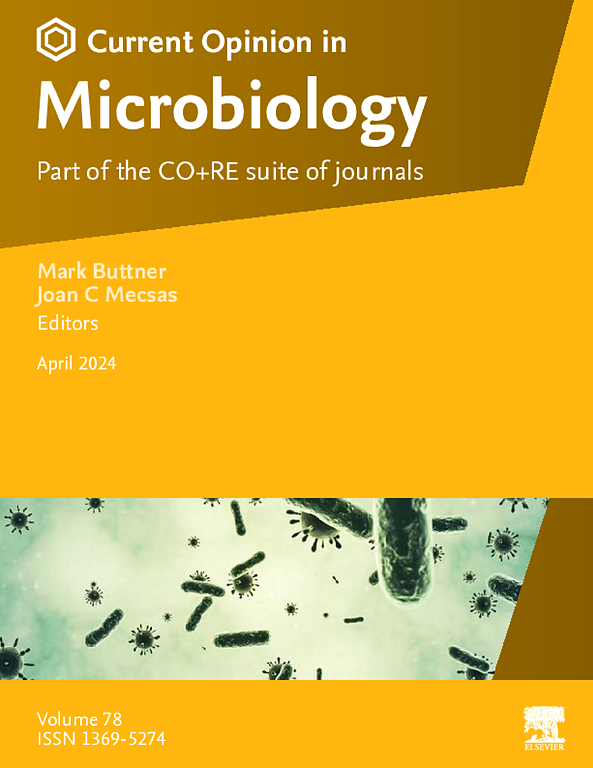细菌如何调节转录终止效率?
IF 7.5
2区 生物学
Q1 MICROBIOLOGY
引用次数: 0
摘要
细菌操作子通常包含基因间转录终止子,可终止部分而非全部 RNA 聚合酶分子。在这些操作子中,终止子的通读水平决定了下游基因的表达,并有助于确定共调基因之间的蛋白质比例。尽管终止子在维持基因表达的均衡性方面起着关键作用,但终止子的强度仍然难以从 DNA 序列中预测。半个世纪以来,人们已经知道一类主要细菌终止子--固有终止子--的必要特征,但尚未建立一个强大的序列功能模型。在此,我们总结了探测内在终止效率序列决定因素的高通量方法,并讨论了反式作用因子对这种序列-功能关系的影响。基于这些研究的主要经验,我们列出了建立终止效率定量模型所必须克服的实验挑战。本文章由计算机程序翻译,如有差异,请以英文原文为准。
How do bacteria tune transcription termination efficiency?
Bacterial operons often contain intergenic transcription terminators that terminate some, but not all, RNA polymerase molecules. In these operons, the level of terminator readthrough determines downstream gene expression and helps establish protein ratios among co-regulated genes. Despite its critical role in maintaining stoichiometric gene expression, terminator strength remains difficult to predict from DNA sequence. The necessary features of a major class of bacterial terminators — intrinsic terminators — have been known for half a century, but a strong sequence–function model has yet to be developed. Here, we summarize high-throughput approaches for probing the sequence determinants of intrinsic termination efficiency and discuss the impact of trans-acting factors on this sequence–function relationship. Building on the main lessons from these studies, we map out the experimental challenges that must be circumvented to establish a quantitative model for termination efficiency.
求助全文
通过发布文献求助,成功后即可免费获取论文全文。
去求助
来源期刊

Current opinion in microbiology
生物-微生物学
CiteScore
10.00
自引率
0.00%
发文量
114
审稿时长
6-12 weeks
期刊介绍:
Current Opinion in Microbiology is a systematic review journal that aims to provide specialists with a unique and educational platform to keep up-to-date with the expanding volume of information published in the field of microbiology. It consists of 6 issues per year covering the following 11 sections, each of which is reviewed once a year:
Host-microbe interactions: bacteria
Cell regulation
Environmental microbiology
Host-microbe interactions: fungi/parasites/viruses
Antimicrobials
Microbial systems biology
Growth and development: eukaryotes/prokaryotes
 求助内容:
求助内容: 应助结果提醒方式:
应助结果提醒方式:


